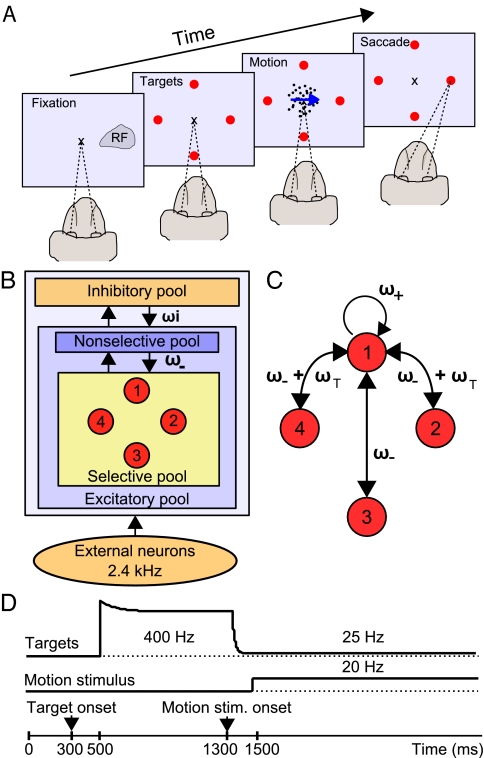Fig. 1.
Experimental design, network architecture, and stimulation protocol. (A) The multiple-choice RDM task. While the monkey is fixating on a central point, the possible alternatives are indicated by 2 or 4 target signals. One of the targets is located in the response field (RF) of the LIP neuron recorded. After a delay, a patch of dynamic random dots appears with a proportion of dots moving coherently toward one of the targets, although the remaining dots keep moving randomly. The amount of coherence controls the task difficulty. The monkey has to decide on the net direction of motion and report its choice by a saccadic eye movement to the corresponding target. (B) Diagram of the spiking neuron network model. The network consists of a population of excitatory pyramidal neurons, structured into 4 selective pools (red) and a nonselective population, that inhibit each other through shared feedback from an inhibitory pool of interneurons. All neurons receive an external background input in the form of a Poisson spike train with a firing rate of 2.4 kHz, simulating spontaneous activity in the cerebral cortex. Unlabeled arrows denote a connectivity of 1. (C) Connectivity between selective pools shown representatively for 1 pool. The recurrent connection is denoted as ω+ and the interpool connection as ω-. Connection weights to and from neighboring pools are additionally enhanced by a value ωT. (D) Time course of input to selective pools. Depending on the number of alternatives a target input was applied to either 2 or 4 pools (see Methods and SI Methods for details). All selective pools receive an input representing the motion stimulus. Both inputs start with a latency of 200 ms after target or motion onset.

